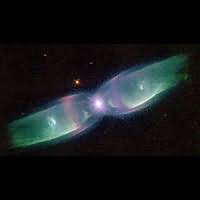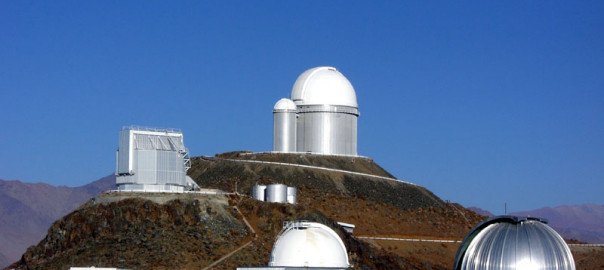This is a set of photos I took a few years ago on an observing trip to the La Silla Observatory in the Andes Mountains of Chile. La Silla was the first observatory built in Chile by the European Southern Observatory. You can find out more on the La Silla web pages.
Working with my research student at the time, Neil Vaytet, we were using the 3.6-metre New Technology Telescope (NTT) to study planetary nebulae (PNe). These are the endpoints of the evolution of stars similar to the Sun. When a star like this runs out of hydrogen fuel in the nuclear furnace at its core, it expands to become a red giant. The outer layers drift off into space and are illuminated by the exposed hot core, a dead star about the size of the Earth which we call a white dwarf. This glowing gas is called a planetary nebula (a historical misnomer as it has nothing to do with planets).

Some of these nebulae are particularly beautiful but the origin of their complex shapes is still unknown. One theory suggests that the star which ejected the nebula has an orbiting companion which sculpts the outflowing material. We selected a sample of PNe known to have binary central stars and used a combination of imaging and spectroscopy (splitting the light into a spectrum and using the Doppler shift to measure the speed of expansion) to determine the structure of the nebula and study any relationship with the central binary itself.
This work was carried out in collaboration with other astronomers including Myfanwy Lloyd and John Meaburn at Manchester, Don Pollacco at Queens University Belfast and Alberto Lopez of the Universidad Nacional Autnoma de Mexico.

